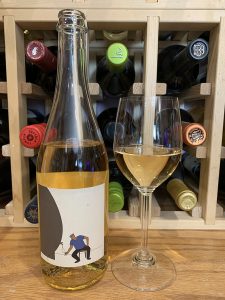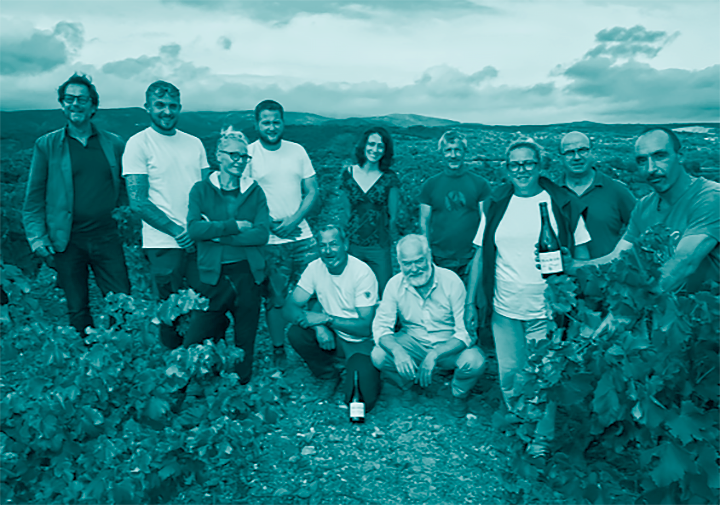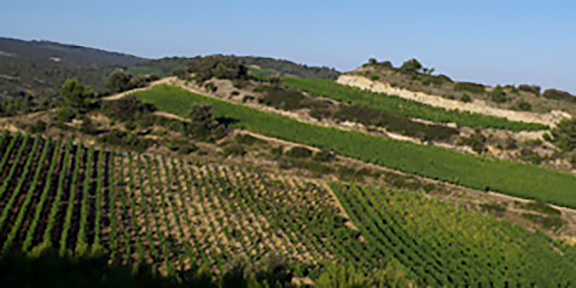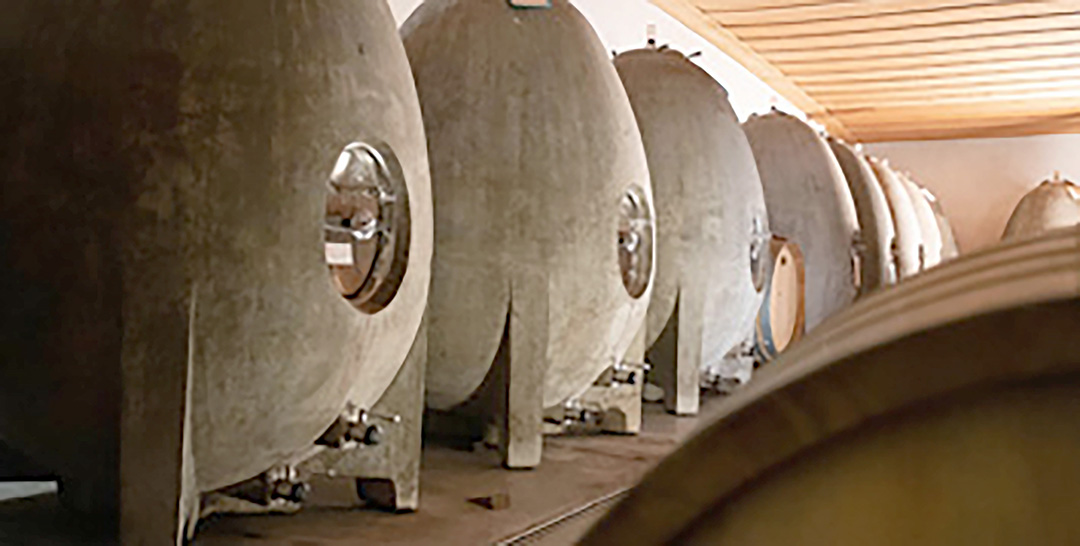Very pale amber-orange color; orange perfúm, white peach on the nose; white peach, apricot, summer fruits on the palate.

Dry; medium-plus body; intense flavors; touch of tannin. Sealed with a crown cap. “Orange” or “amber” wine is a special niche wine on the rise. Or, return, since this style of wine has been made at least 8,000 years. The easily characterization is it is white wine made like red wine. It spends extended time on the skins, pips, and pulp. It is fermented at red wine temperatures. In general, orange wine:
• Ferments and macerates on its skins for at least four days.
• Undergoes complete malolactic fermentation.
• Minimal use of sulphur dioxide (no more than 40 mg/L).
• Residual sugar does not exceed 4 g/L (clearly making it a dry wine).
• Color from light golden to deep orange color.
It is hard to describe this and other orange wines because their properties don’t synch with the classic wines of today. This is made using blanc à muscat petits grains grapes, a grape of Greek origin with small berries and tight clusters. While classified as a white grape, some strains produce berries that are pink or reddish brown. In France, the grape is used as a blending grape with grenache blanc and muscat of Alexandria, but it appears in many other iterations. Its most common synonym is muscat canelli.

Chateau Maris is a progressive operation in France’s Languedoc region. It was the first European vineyard/winery to earn B Corporation certification. B Corporation certification promotes companies that transform their business into a virtuous force for good: good for workers, good for communities and good for the environment. The winery received Ecocert certification in 2002, Biodyvin in 2004 and Demeter in 2008.

The chateau covers some 111 acres divided into many plots on the hillside above La Livinière. La Livinière (meaning “place planted with vines”), is located in the heart of the Minervois between Toulouse and Montpellier. Château Maris was the first vineyard in the AOC Minervois La Livinière to be fully certified biodynamic.
The winery is justifiably proud of its direction. The website notes: “Our winery is a truly singular place. We produce our wines with indigenous yeast, in custom-made wooden, thick concrete or egg-shaped vats to avoid using electrically conductive materials. A classic stamp of Château Maris’ identity is our ovoid vats. This shape, adapted from Roman dolia, naturally encourages the flow of energy and convection currents. Our preserved wines are light ‘brewed’ by the natural resuspension of the fine lees.”

Owner Robert Eden fell under the spell of La Livinière and moved to Château Maris in 1997. He implemented an organic and biodynamic approach from the outset. A committed winegrower and world-renowned specialist in biodynamics, he promotes the benefits of this practice throughout the Languedoc.
Kevin Parker is the co-owner of Château Maris and places an emphasis on the winery proactively responding to climate change. The website notes Parker: “guarantees the longevity of the Château’s philosophy. Now Managing Partner of SICM (Sustainable Insight Capital Management) in New York and previously a member of Deutsche Bank’s board of directors, he argues that the science of climate change is irrefutable.”
Chateau Maris, Orange Wine made with Certified Organic Grapes 2021 is interesting introduction into the world of “orange wine.” Fresh with flagrant fruit flavors of the muscat petit grain grapes. You should try this simply to experience the “next big thing” in wine, which actually is among the oldest things ever in wine. Pair with ham tapas, tapenade toast, tomato mozzarella; bold foods, including curry dishes, Korean fare. Enjoy on its own with charcuterie board. Cheese—hard cheeses, even including salty cheese (rare that a white wine can handle that). Pecorino, feta, kashkaval, aged gouda. Because it is rare and involves more complex manufacturing steps than whites, orange wine often is more expensive—$30-40. Not this. Excellent value at $12-18.
